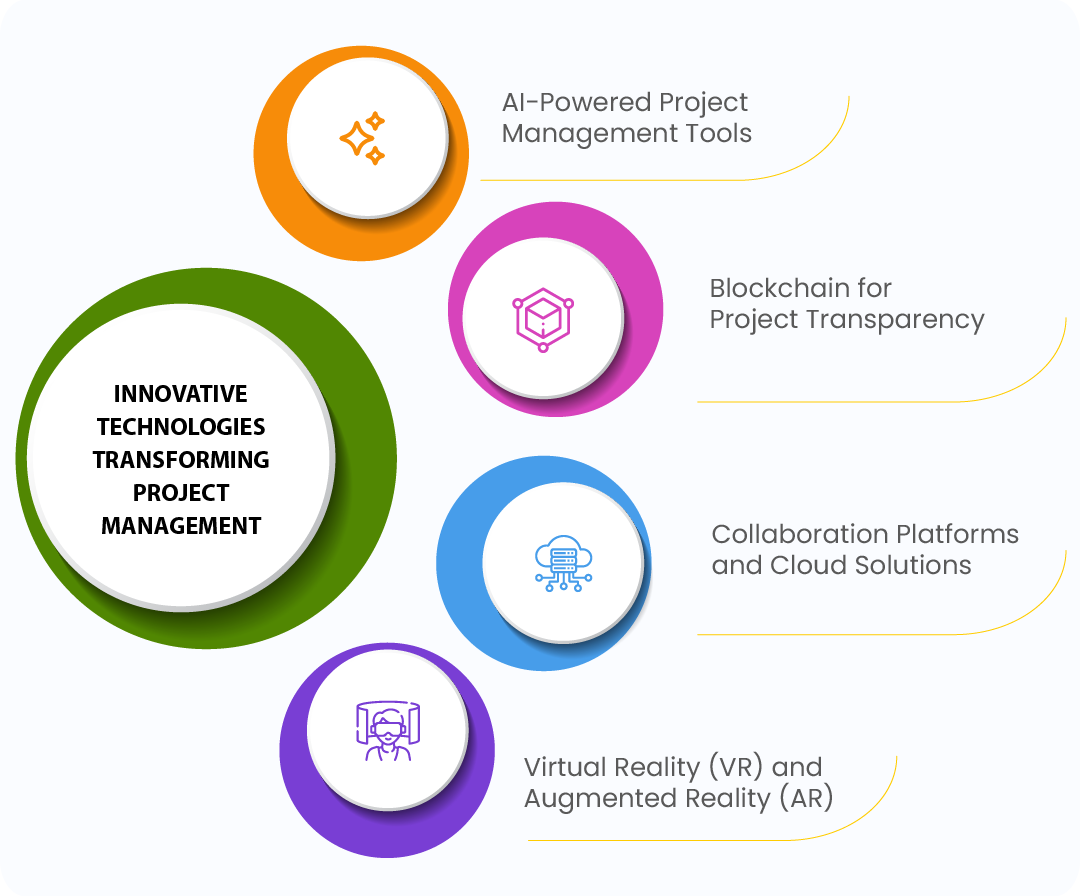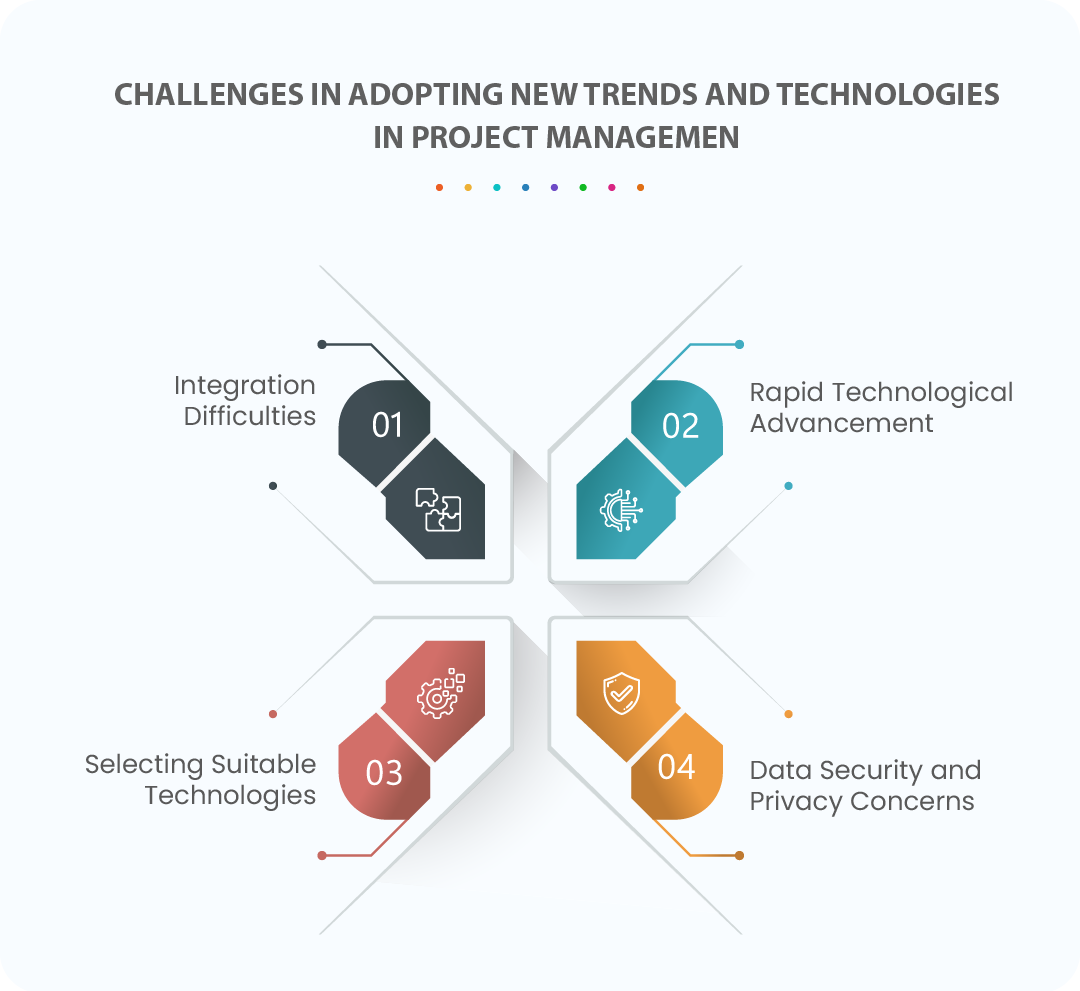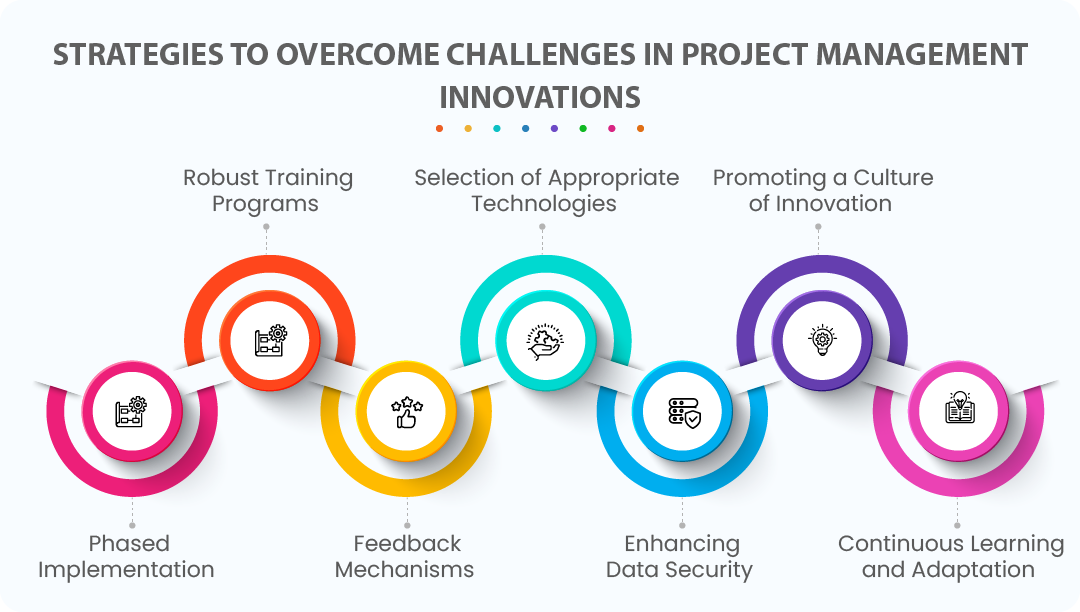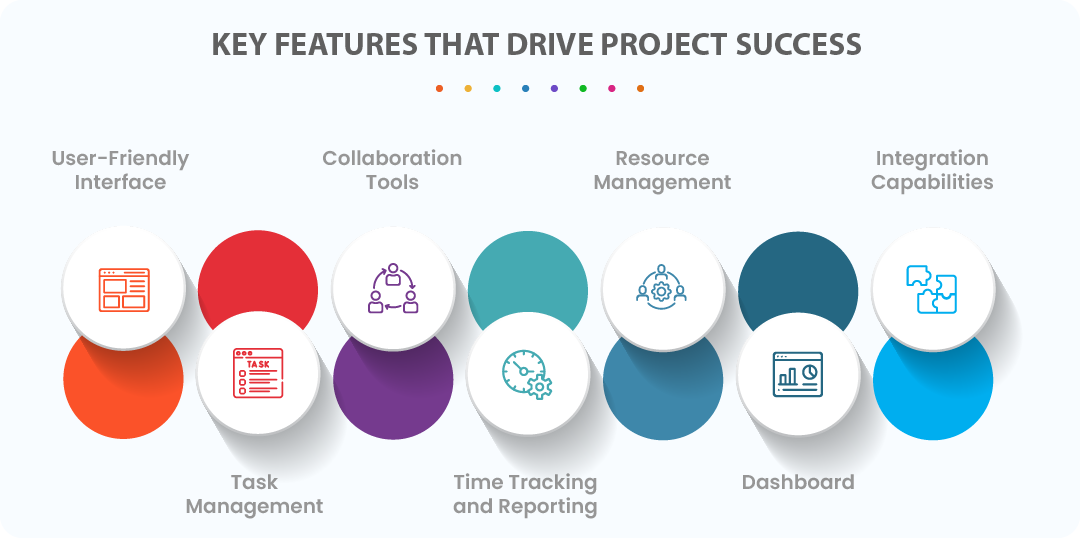Let's start,
- Introduction
- The Changing Landscape of Project Management
- Emerging Trends in Project Management
- Innovative Technologies Transforming Project Management
- Challenges in Adopting New Trends and Technologies in Project Management
- Strategies to Overcome Challenges in Project Management Innovations
- The Role of Yoroproject in Modern Project Management
- Concluding Thoughts
Introduction
The project management landscape is undergoing significant changes driven by rapid technological advancements, shifting work environments, and the increasing complexity of business operations. Traditionally, project management was focused on rigid, linear methodologies like Waterfall, but today, flexibility, adaptability, and speed have become critical elements. Agile and hybrid frameworks have gained popularity due to their ability to respond quickly to changing project requirements and market conditions. Additionally, the global shift towards remote work and distributed teams has brought new challenges and opportunities, necessitating the adoption of digital tools and strategies that support collaboration across diverse and geographically dispersed teams.
Digital transformation is also reshaping project management, with technologies such as artificial intelligence (AI), automation, and data analytics providing new ways to manage tasks, track performance, and mitigate risks. The modern project manager must now blend traditional project management skills with digital fluency, understanding the impact of emerging tools and technologies on project outcomes.
Importance of Innovation in Modern Project Management
Innovation has become essential in project management to keep pace with an increasingly competitive and complex business environment. As projects grow in scale and scope, traditional methods alone can no longer ensure success. To maintain efficiency, control costs, and meet project deadlines, organizations must continuously seek new ways to innovate. Whether through adopting cutting-edge technologies, evolving methodologies like Agile, or fostering a culture of continuous improvement, innovation drives better results, reduces risks, and enhances collaboration among teams.
Incorporating AI and automation, for example, allows project managers to streamline routine tasks, such as scheduling, reporting, and resource allocation, freeing up time for more strategic work. Likewise, the use of data-driven decision-making improves forecasting accuracy and ensures projects stay on track. These innovations not only improve efficiency but also enhance the project manager’s ability to navigate uncertainties, adapt to evolving demands, and ensure project success in a dynamic environment.
This white paper aims to provide project managers, team leaders, and organizational decision-makers with a comprehensive guide to understanding and implementing the latest advancements in project management to achieve better outcomes and maintain a competitive edge in a rapidly changing business landscape.
The Changing Landscape of Project Management
Overview of Traditional Project Management Practices
Historically, traditional project management methodologies like Waterfall dominated the landscape. This linear approach, where each phase must be completed before the next begins, was prevalent in industries such as construction and manufacturing. However, the rigidity of the Waterfall method posed challenges in adapting to changing requirements. A survey by PMI found that 37% of Waterfall projects failed to meet their original goals, and only 29% were completed on time, according to the 2020 Standish Group report.
Impact of Globalization and Remote Work
Globalization has significantly reshaped project management. In 2023, 81% of organizations manage distributed project teams across various locations. The COVID-19 pandemic accelerated this trend, with a Gartner survey indicating that 74% of CFOs planned to make remote work permanent for some employees. This shift has necessitated more frequent use of collaboration tools, with 52% of project managers reporting increased reliance on technology for managing distributed teams.
Despite these advancements, challenges remain. 48% of project managers struggle with coordination across time zones, and 33% cite cultural differences as major hurdles. Nevertheless, technology, including cloud-based project management software and video conferencing tools, is vital for maintaining communication and project visibility, with 89% of project managers affirming its importance.
Shift Toward Agile Methodologies and Hybrid Approaches
Agile methodologies have emerged as the preferred choice for many organizations seeking flexibility in project management. A 2022 survey by Digital.ai found that 87% of businesses now implement some form of Agile in their projects. This approach facilitates iterative development and quick adjustments based on feedback, particularly benefiting industries like software development where requirements are constantly evolving.
Moreover, hybrid approaches that integrate Agile with traditional methodologies are gaining popularity. The 2022 PMI Pulse of the Profession report highlighted that 58% of organizations employ hybrid project management strategies. This model combines the structured planning of Waterfall with Agile’s adaptability during execution, leading to 21% increase in project success rates and 33% higher likelihood of staying within budget.
Organizations using Agile and hybrid methodologies reported significant improvements: a 27% increase in stakeholder satisfaction, 22% enhancement in team collaboration, and a 30% reduction in project failure rates.
Emerging Trends in Project Management

1. AI and Automation in Project Management
AI technologies are transforming project management by enabling predictive analytics that forecast outcomes and identify potential risks based on historical data. By analyzing factors like project scope, timelines, and team performance, AI can suggest proactive measures and recommend optimal decision-making paths to keep projects on track.
Additionally, automation tools streamline routine tasks such as task tracking, resource allocation, and reporting, saving time and reducing human error. Automated systems provide real-time updates on project statuses and optimize team assignments based on skills and availability. Moreover, automated reporting generates insightful metrics for stakeholders, enhancing overall project efficiency.
2. Hybrid Work Models
As organizations adopt hybrid work models, project management strategies must evolve to support both remote and in-office teams. This shift requires flexible communication and inclusive planning to ensure alignment among all team members, regardless of location.
Collaboration tools like project management software, video conferencing, and messaging platforms are essential for facilitating real-time communication and resource sharing. These technologies enable distributed teams to work seamlessly and maintain transparency throughout the project lifecycle, helping project managers bridge the gap between remote and on-site members and fostering a cohesive working environment.
3. Data-Driven Project Management
Data-driven project management harnesses big data and real-time analytics to improve decision-making. By analyzing extensive project-related data, managers gain insights into performance metrics, resource utilization, and potential bottlenecks, allowing for proactive adjustments and strategic planning that enhance project outcomes.
Data visualization tools further transform reporting and monitoring by creating interactive dashboards and visual reports that simplify complex data. This visual representation helps project managers quickly identify trends, track KPIs, and communicate project status to stakeholders, promoting clarity and facilitating timely decision-making.
4. Agile Evolution
The increasing demand for agility in project management has driven the adoption of Agile and hybrid methodologies, enhancing flexibility, responsiveness, and collaboration. Hybrid methodologies blend Agile practices with traditional approaches, allowing teams to customize their processes for specific project needs and adapt quickly to changing market conditions.
As Agile methodologies gain traction, large organizations are finding ways to scale these frameworks effectively. Scaling Agile involves aligning multiple teams, standardizing practices, and ensuring smooth communication across the organization. Structured frameworks like the Scaled Agile Framework (SAFe) and Large-Scale Scrum (LeSS) facilitate the implementation of Agile principles at scale, promoting consistency and collaboration among diverse teams.
5. Sustainability in Projects
Sustainability is increasingly essential in project management, prompting a shift toward green practices that prioritize environmental impact. Project managers are adopting strategies such as waste reduction, sustainable materials, and energy-efficient processes to align with global efforts against climate change and enhance corporate social responsibility.
Integrating sustainability into project planning and execution requires a comprehensive approach. Managers must evaluate environmental implications and make informed decisions in resource selection, project design, and stakeholder engagement. By embedding sustainable practices throughout the project lifecycle, organizations can achieve their goals while contributing to a healthier planet.
Innovative Technologies Transforming Project Management

AI-Powered Project Management Tools
AI-powered project management tools are revolutionizing the way projects are planned and executed. These tools leverage real-time data analytics to provide insights into project performance, resource utilization, and potential risks. Intelligent task automation helps streamline repetitive processes, allowing project managers to focus on strategic decision-making. Additionally, AI can enhance project forecasting by analyzing historical data and predicting future trends, enabling teams to allocate resources more effectively and anticipate challenges before they arise. This integration of AI not only boosts efficiency but also empowers project managers to make data-driven decisions that enhance overall project outcomes.
Blockchain for Project Transparency
Blockchain technology is gaining traction in project management for its ability to improve accountability and transparency. By creating a decentralized and immutable ledger, blockchain ensures that all project transactions are recorded securely and can be audited in real-time. This transparency fosters trust among stakeholders and reduces the risk of fraud or miscommunication. Moreover, blockchain enables the use of smart contracts, which are self-executing contracts with the terms directly written into code. These smart contracts automate processes, such as payment triggers based on project milestones, further enhancing operational efficiency and accountability in project management.
Collaboration Platforms and Cloud Solutions
Collaboration platforms and cloud-based solutions are essential for enhancing communication and teamwork in project management. These tools provide a unified space for project planning, task assignment, and resource sharing, enabling teams to collaborate effectively regardless of their physical location. Project management software integrated with collaboration tools allows for real-time updates and transparency, ensuring all team members are on the same page. Cloud solutions further enhance accessibility, enabling team members to access project information and documents from anywhere at any time. This flexibility is crucial for supporting remote and hybrid work environments, ultimately improving project efficiency and outcomes.
Virtual Reality (VR) and Augmented Reality (AR)
Virtual Reality (VR) and Augmented Reality (AR) technologies are transforming project visualization and training. VR provides immersive environments where project teams can visualize complex designs, simulate project scenarios, and conduct virtual walkthroughs before execution. This enhanced visualization helps identify potential issues early in the project lifecycle, reducing the risk of costly changes during later stages. AR, on the other hand, overlays digital information onto the physical environment, allowing team members to interact with project data in real-time. This capability can be particularly beneficial for training and onboarding, providing an interactive and engaging way for new team members to learn about project processes and tools. Overall, VR and AR enhance collaboration and understanding among project teams, leading to more successful project outcomes.
Challenges in Adopting New Trends and Technologies in Project Management

- Integration Difficulties arise when organizations attempt to align new technologies with existing workflows. This misalignment can lead to potential disruptions, causing decreased productivity during the transition period as teams adjust to unfamiliar systems and processes. Employees may struggle with the learning curve, further complicating the integration.
- Rapid Technological Advancement presents another challenge, as the overwhelming pace of change can make it difficult for teams to stay updated with the latest tools and methodologies. This rapid evolution may hinder organizations from fully leveraging new technologies, leading to missed opportunities for improvement.
- Selecting Suitable Technologies is crucial; organizations must choose tools that align with their specific needs and project goals. Failing to do so risks wasted resources and decreased efficiency, resulting in frustration among team members who may feel the technology does not serve their objectives.
- Data Security and Privacy Concerns necessitate robust security measures when implementing cloud solutions or data analytics. Organizations must ensure compliance with relevant regulations to protect sensitive project information, thereby maintaining trust with stakeholders and safeguarding against potential breaches.
Strategies to Overcome Challenges in Project Management Innovations

1. Phased Implementation
Introduce new technologies in stages rather than all at once, allowing teams to adjust gradually and minimizing disruption. This approach includes initiating pilot projects to test new tools and methodologies before full-scale implementation, providing valuable insights into necessary adjustments and potential challenges, thereby ensuring a smoother transition.
2. Robust Training Programs
Offer tailored training sessions that cater to different user levels, ensuring that everyone understands how to effectively utilize new technologies. This includes providing mentorship opportunities, where less experienced team members are paired with mentors who can guide them through the learning process, fostering a supportive environment for skill development.
3. Feedback Mechanisms
Establish routine feedback sessions to discuss challenges and successes in using new tools, fostering an environment of continuous improvement. Complement this with surveys and assessments to gather input from team members about their experiences with new technologies and identify any support they may need, ensuring that the transition process remains responsive to their needs.
4. Selection of Appropriate Technologies
Conduct thorough assessments to determine the specific needs of the organization and how new tools align with project goals. Complement this with trial periods that utilize trial versions of software to evaluate compatibility and effectiveness before making a purchase, ensuring that the chosen technologies are well-suited for the organization’s requirements.
5. Enhancing Data Security
Implement Security Protocols: Develop and enforce comprehensive data security policies to protect sensitive information when using new technologies. This includes conducting regular audits to ensure compliance with regulations and identify potential vulnerabilities, thereby maintaining the integrity and security of project data.
6. Promoting a Culture of Innovation
Encourage Experimentation: Create an environment where team members feel safe trying new ideas and sharing creative solutions without fear of failure. This approach should be complemented by recognition and rewards for innovative contributions, acknowledging and celebrating team members' efforts to foster a sense of ownership and motivation within the team.
7. Continuous Learning and Adaptation
Encourage Lifelong Learning: Promote opportunities for ongoing professional development through courses, certifications, and industry events. This commitment to learning should be paired with adaptation to feedback by utilizing insights from project retrospectives to make necessary adjustments and improve future project processes, ensuring that the organization remains agile and responsive to evolving needs.
The Role of Yoroproject in Modern Project Management
Yoroproject is a versatile project management tool designed to streamline workflows and enhance collaboration across teams. Here are key features and benefits of Yoroproject that make it an effective solution for project management:
Key Features That Drive Project Success

- User-Friendly Interface: Yoroproject features an intuitive interface designed for ease of use, making it accessible for users at all experience levels. This simplicity allows teams to quickly adapt to the platform, minimizing the learning curve and enabling faster project initiation and management.
- Task Management: The platform empowers users to create, assign, and efficiently track tasks, fostering accountability and clarity within teams. With built-in prioritization features, team members can focus on high-priority tasks, ensuring deadlines are met and project goals are achieved.
- Collaboration Tools: Yoroproject includes integrated communication features such as chat and file sharing, facilitating real-time collaboration among team members regardless of their physical location. This is particularly beneficial for remote and hybrid teams, enabling seamless interaction and reducing the barriers often associated with distance.
- Time Tracking and Reporting: The tool's time tracking functionalities allow users to monitor how much time is spent on individual tasks. This data can be leveraged to generate insightful reports, helping teams assess productivity levels and overall project progress, which informs future planning and resource allocation.
- Resource Management: Yoroproject enhances resource management by providing visibility into team availability and workload. This ensures projects are adequately staffed, preventing bottlenecks and maximizing efficiency.
- Dashboard: Yoroproject's Dashboard feature offers real-time insights into project performance, allowing teams to monitor KPIs, track progress, and identify bottlenecks through customizable charts and reports. It enhances transparency, streamlines decision-making, and provides a centralized view of tasks, timelines, and resource allocation, keeping projects on track efficiently.
- Integration Capabilities: Yoroproject can seamlessly integrate with other tools and software that teams may already be using, enhancing overall functionality and streamlining processes, making it a versatile solution for organizations of all sizes.
Why Yoroproject?
- Increased Productivity: By providing a centralized platform for managing tasks, collaboration, and resources, Yoroproject helps teams work more efficiently, leading to increased productivity.
- Enhanced Communication: The collaboration features foster better communication among team members, reducing misunderstandings and improving project outcomes.
- Data-Driven Insights: The reporting tools provide valuable insights that help project managers make informed decisions based on real-time data.
- Flexibility and Scalability: Yoroproject can adapt to projects of varying sizes and complexities, making it suitable for both small teams and large organizations.
- Improved Project Visibility: With tools to track progress and milestones, stakeholders can easily stay informed about project status and make timely adjustments as needed.
Concluding Thoughts
In summary, the landscape of project management is rapidly evolving, driven by key trends and innovations that organizations must watch closely. From the integration of artificial intelligence and automation to the adoption of hybrid work models and data-driven decision-making, these advancements are reshaping how projects are planned, executed, and evaluated. The importance of staying agile and adaptable in this dynamic environment cannot be overstated; organizations that embrace flexibility will be better equipped to respond to changing market demands, mitigate risks, and seize new opportunities.
For businesses seeking to stay ahead of the curve, Yoroproject offers an innovative solution tailored to meet the needs of modern project management. With features like real-time task tracking, resource management, and collaboration tools, Yoroproject empowers teams to work efficiently and adapt quickly to changes. By leveraging AI-powered insights and customizable workflows, organizations can optimize their processes, improve communication, and drive project success. Yoroproject is the perfect tool for teams looking to thrive in today’s fast-paced project management landscape.
As we look to the future, it is crucial for businesses to adopt modern project management practices that leverage these innovations for long-term success. This includes investing in cutting-edge tools, fostering a culture of continuous improvement, and prioritizing ongoing training for team members. By doing so, organizations can enhance collaboration, drive efficiency, and ultimately achieve better project outcomes. Now is the time to commit to these transformative practices and position your organization for sustained success in an ever-changing landscape.